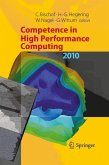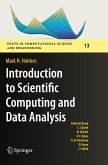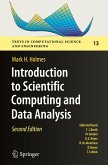The present book provides an introduction to using space-filling curves (SFC) as tools in scientific computing. Special focus is laid on the representation of SFC and on resulting algorithms. For example, grammar-based techniques are introduced for traversals of Cartesian and octree-type meshes, and arithmetisation of SFC is explained to compute SFC mappings and indexings.
The locality properties of SFC are discussed in detail, together with their importance for algorithms. Templates for parallelisation and cache-efficient algorithms are presented to reflect the most important applications of SFC in scientific computing. Special attention is also given to the interplay of adaptive mesh refinement and SFC, including the structured refinement of triangular and tetrahedral grids. For each topic, a short overview is given on the most important publications and recent research activities.
The locality properties of SFC are discussed in detail, together with their importance for algorithms. Templates for parallelisation and cache-efficient algorithms are presented to reflect the most important applications of SFC in scientific computing. Special attention is also given to the interplay of adaptive mesh refinement and SFC, including the structured refinement of triangular and tetrahedral grids. For each topic, a short overview is given on the most important publications and recent research activities.
From the reviews:
"This book concentrates on low-dimensional, two or three at most, curves used for linearly ordering points on the 2D or 3D grid with applications in computer graphics and data structures. ... Each section ends with indications for further reading and exercises. This is a new book in the field of computer science which should be a valuable resource for advanced undergraduate and graduate students as well as more experienced researchers." (Ewa Skubalska-Rafajlowicz, Mathematical Reviews, January, 2014)
"Bader's book ... provides an introduction to the algorithmics of space-filling curves. ... The book has many color illustrations and can be used as a textbook and as reference monograph for research." (Luiz Henrique de Figueiredo, MAA Reviews, April, 2013)
"This is a gentle introduction to space filling curves. Emphasis is on the representation, implementation and application in computer science. ... It is clear that the author has a long teaching experience with this subject. He had found the right balance between motivation, rigor, application, implementation, in just the right pace to take the reader/student along climbing up the hill towards of increasing complexity as academic examples are left and one approaches the real life applications." (A. Bultheel, The European Mathematical Society, December, 2012)
"This book concentrates on low-dimensional, two or three at most, curves used for linearly ordering points on the 2D or 3D grid with applications in computer graphics and data structures. ... Each section ends with indications for further reading and exercises. This is a new book in the field of computer science which should be a valuable resource for advanced undergraduate and graduate students as well as more experienced researchers." (Ewa Skubalska-Rafajlowicz, Mathematical Reviews, January, 2014)
"Bader's book ... provides an introduction to the algorithmics of space-filling curves. ... The book has many color illustrations and can be used as a textbook and as reference monograph for research." (Luiz Henrique de Figueiredo, MAA Reviews, April, 2013)
"This is a gentle introduction to space filling curves. Emphasis is on the representation, implementation and application in computer science. ... It is clear that the author has a long teaching experience with this subject. He had found the right balance between motivation, rigor, application, implementation, in just the right pace to take the reader/student along climbing up the hill towards of increasing complexity as academic examples are left and one approaches the real life applications." (A. Bultheel, The European Mathematical Society, December, 2012)








